Let's get started:
Instructions - Renegade:
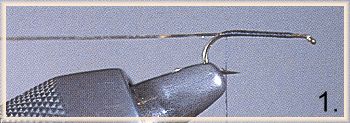
1. Place a hook in the vise, and using a capture knot,
start the thread at the starting point. Next, tie in
a couple of inches (enough so you can get a grip on the
stuff) of Mylar tinsel at the starting point. Remember,
tie in the tinsel with the side you want to hide
facing you. In this case, tie in the tinsel silver
side out.
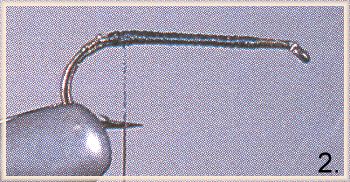
2. Now, wrap the thread over the tinsel and down the
bend of the hook - about one-third of the way down
the bend is about right - and wrap back to the starting
point. Then wrap the tinsel over the thread to the
starting point, tie down, and half-hitch. This forms
the "tag" of the fly.

3. Using the gape of the hook as a gauge, select one
brown hackle one and a half gapes wide. Strip the fuzz
and fibers from the butt. Tie in by the butt at the
starting point, with the curve of the feather facing
away from you.
4. Select four peacock herls. Tie in the grouped
herl by the tips at the starting point, wrap the thread
forward about six wraps, and half-hitch.
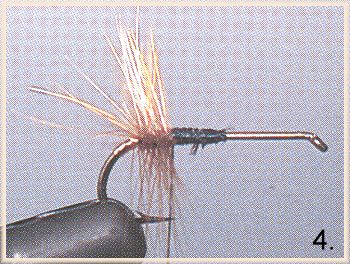
5. Grasp the tip of the hackle with hackle pliers and begin
wrapping forward, over the herl tie-in point. Each wrap
should touch the preceding wrap. Make about four wraps,
covering about one eye width of the shank. Tie down the
feather, half-hitch, and trim the excess hackle material
flush with the tie-down points.
6. Prepare the herl for wrapping: spiral the herl
around the tying thread.
7. Wrap the herl forward, making a dense body by placing
each wrap right against the preceding wrap. Wrap forward
about three-quarters of the way down the shank, tie down the
herl, and half-hitch.
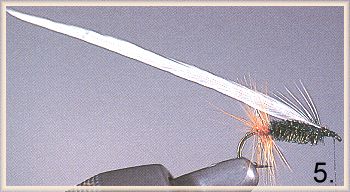
8. Again using the gape of the hook as a gauge, select
a cream hackle a gape and a half wide. Clean fuzz and
fiber from the butt, and tie in by the butt (the "sweet
spot" for this tie-in point is where the butt begins an
abrupt taper to form the quill of the feather) at the front
of the body with the curved side of the feather facing you.
9. Using hackle pliers, wrap the hackle forward, each wrap
against the wrap preceding it. Make about four turns,
but do not pass the index point. Tie down, half-hitch,
and trim excess.

10.
Form a small, tapered head; whip finish; and trim
thread. Add a drop of cement to the head.
Fishing the Renegade:
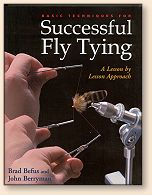
Though we've tied this Renegade with dry-fly hackle and would
fish it as a dry fly, sunken Renegades hae also taken their
share of fish. So, if your Renegade happens to sink, don't
be too quick to start casting again. Let it drift for a while,
and see what happens. Renegades are also fine for bluegill
and crappie, by the way. ~ Brad & John
Credits: From Successful Fly Tying by Brad Befus
and John Berryman, published by Pruett Publishing.



